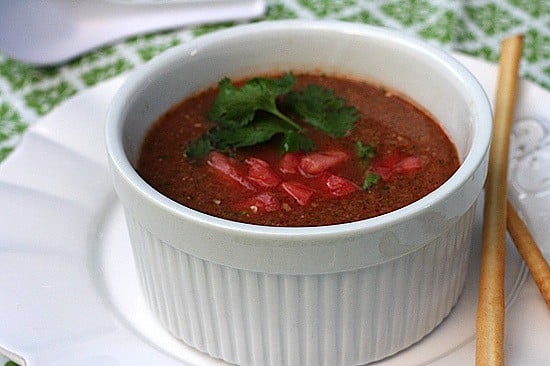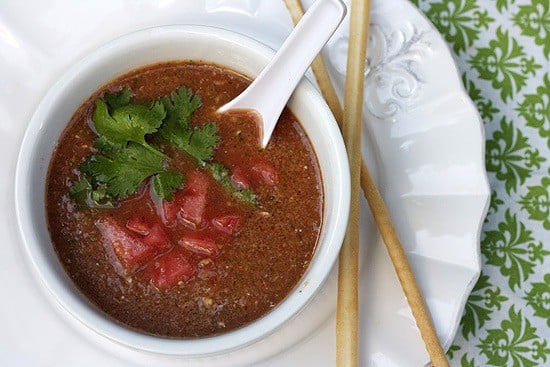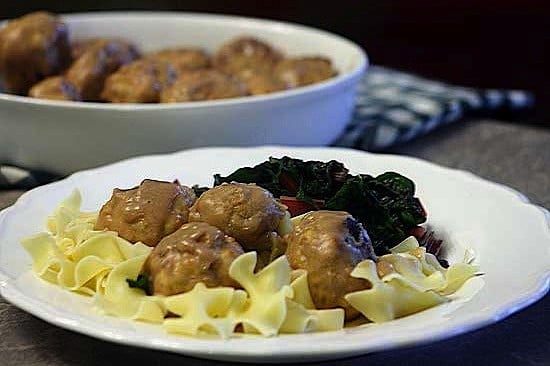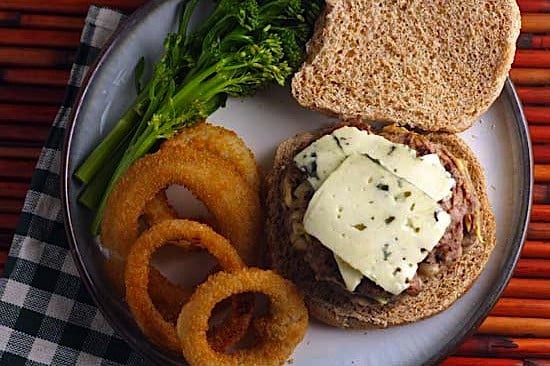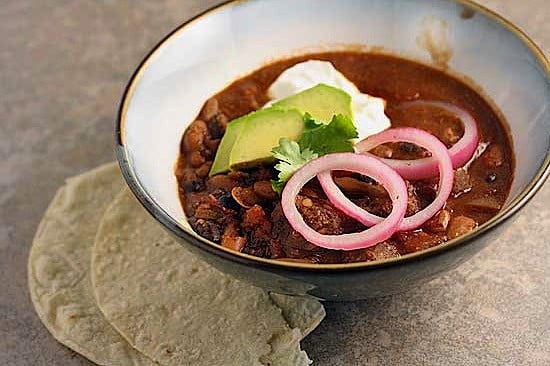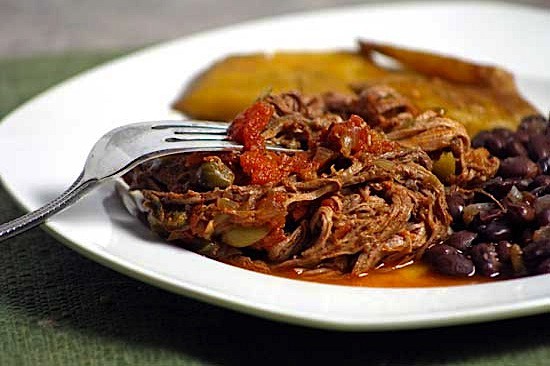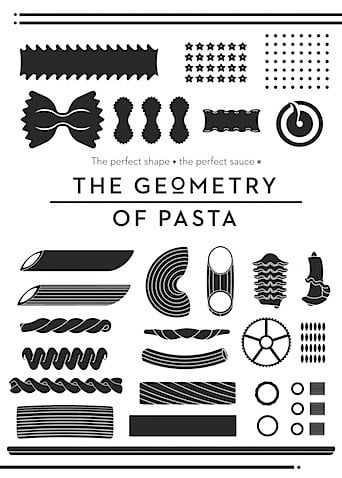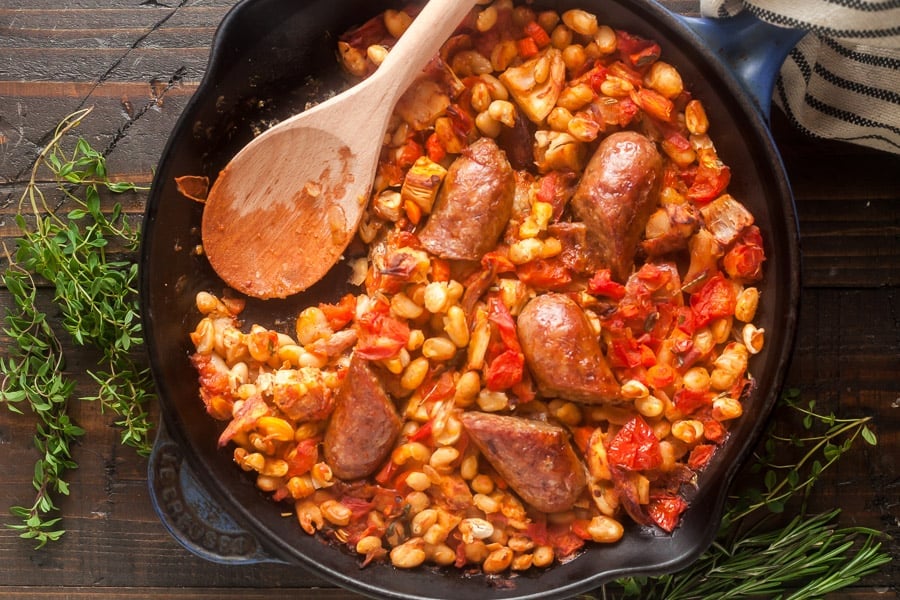With over 300 healthy dinner ideas (that taste good!) you’ll be sure to find a ton of new favorites for your family. These nourishing homemade dinner recipes focus on fresh produce, lean meats, and whole grains so you feel healthy inside and out.
This collection of healthy weeknight dinners includes plenty of options no matter what diet you follow -- from gluten free and low carb recipes to Whole 30 and Paleo options to healthier spins on classic comfort food favorites. You’ll also find tons of sheet pan dinners and one pan meals that make clean up so easy! Your whole family will love this sheet pan chicken recipe with crispy gnocchi and my favorite goulash soup. In the summer, grill up some Greek burgers. Or make an easy marinade for sirloin tip steak as a quick Monday night meal. Who knew healthy could taste so good -- or be so simple?
Healthy Weeknight Dinner Recipes
Looking for dinner ideas for tonight? These healthy weeknight dinner ideas are perfect when you’re tired of takeout but don’t know what to make for your family.
With over 300 healthy dinner ideas (that taste good!) you’ll be sure to find a ton of new favorites for your family. These nourishing homemade dinner recipes focus on fresh produce, lean meats, and whole grains so you feel healthy inside and out.
This collection of healthy weeknight dinners includes plenty of options no matter what diet you follow — from gluten free and low carb recipes to Whole 30 and Paleo options to healthier spins on classic comfort food favorites.
You’ll also find tons of sheet pan dinners and one pan meals that make clean up so easy!
Your whole family will love this sheet pan chicken recipe with crispy gnocchi and my favorite goulash soup. In the summer, grill up some Greek burgers. Or make an easy marinade for sirloin tip steak as a quick Monday night meal.
Who knew healthy could taste so good — or be so simple?
Watermelon Gazpacho {No Tomatoes!}
Like most of the country, New York has been suffering through a heat wave for the past week. Quite frankly, it’s too hot to cook or even to eat anything very substantial. For the first few days I was content eating salads for dinner, but after more than two or three days of salad I start to get cranky so I tried to think of something that would satisfy my raving for real food without requiring me to actually cook (since the minutes I spent over the stove sautéing onions last night left me so hot that I couldn’t even enjoy the steak that Shawn grilled for me).
An ice-cold gazpacho seemed like it would hit the spot, but that suggestion was met with a resounding, “No way!” My effort to convince Shawn that gazpacho is basically just pureed salsa (the only way he’ll eat raw tomatoes) didn’t get me anywhere. Luckily, I had this recipe up my sleeve — a sightly spicy watermelon soup without a single tomato.
Lightened-Up Swedish Meatballs
My cookbook collection was taking over the dining room. What started as a few carefully selected books calling the top of the radiator home had become a mess of books stacked every which way and cluttering up the space. Even our marble bookends couldn’t keep the heavy stack upright, and when they came crashing down for the millionth time, we realized that we needed some real shelves in the space. You totally see where this is going, right? Yup… we talked about going to Ikea and buying some shelves to turn into a fake built-in.
Which inevitably lead me to crave Swedish meatballs (which is funny, considering I don’t particularly care for the ones that Ikea serves.) Anyway, we never made it to Ikea but a few weeks later the idea of Swedish meatballs was still nagging at me. Traditional Swedish meatballs are very heavy though — full of pork and beef, fried in ungodly amounts of butter, and coated in cream — and well, stores are already selling bathing suits….
I found a recipe from Elise that looked easy enough to lighten up and I made a few substitutions: extra-lean turkey instead of red meat, baking instead of frying, way less butter. Served over egg noodles and next to some sauteed chard, these Swedish meatballs made a delicious meal that definitely satisfied my craving. (If you’re wondering, the cookbooks have been relocated to a better shelf in the living room where they stay put without any bookends.)
Kitchen Tip: We don’t eat a lot of bread, so I don’t buy it very often. When we do buy it, it tends to get stale before we can eat it all. I’ve taken to throwing the past few end pieces into a bag in the freezer to use as fresh breadcrumbs, which yield softer meatballs than “regular” bread crumbs. Just pull out a frozen pice of bread or two, smash it with a mallet to make crumbs, and let it defrost for a few minutes.
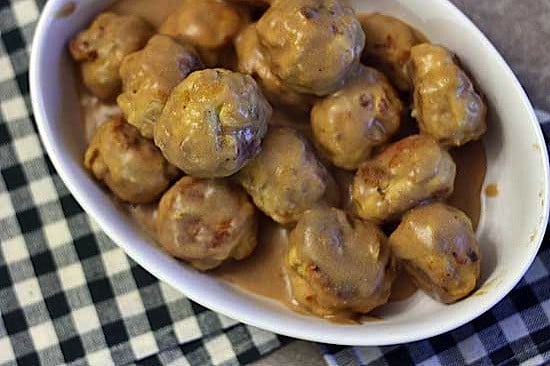
Beef and Bean Chili with Pickled Onions
The subtle, smoky heat of chipotles peppers and the bright snap of pickled onions make this rich stew one of our favorites, and Shawn often requests it.
Unlike other chili recipes that use ground meat, this one calls for cubes of stew beef that, combined with the cornmeal used to thicken it, give the chili a rustic feel that reminds me of cowboys eating around a campfire. This chili is hearty enough to serve on it’s own – no need for rice – but I like to have a few corn tortillas on the side to help sop up the last bits of sauce.
Don’t be tempted to skip the onions – they’re what makes this dish, and it just isn’t the same at all without them.
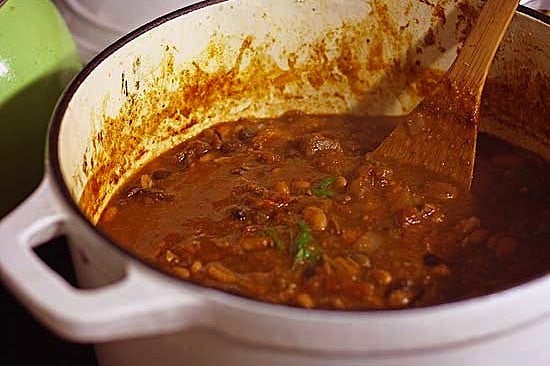
Tip: I almost always buy packages of pre-cubed stew beef for this recipe, but I find that it’s best to cut each cube into two or three pieces before cooking. Otherwise, they’re too big and I need to use a knife in order to eat my chili. Cutting the cubes into smaller pieces also increases the surface area of the beef, making more room for the other flavors. If you can’t find pre-cubed meat, you can use a chuck roast or any other cut of meat suitable for stewing/braising.
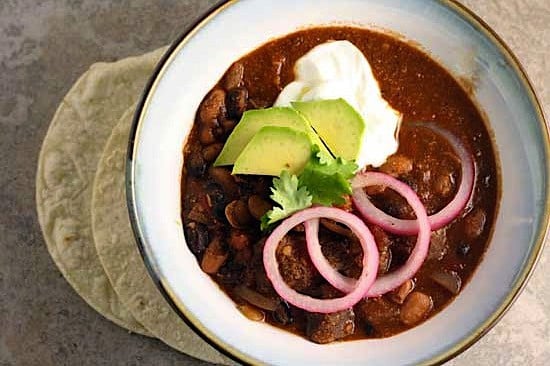
Ropa Vieja with Olives and Capers
Ropa Veija is a traditional Cuban dish featuring beef that is slowly stewed in a sauce of tomatoes, garlic, and bell peppers until it falls apart into shreds. With the texture of pulled pork and the comforting flavor of pot-roast, Ropa Veija is a real crowd pleaser!
Although it does take a while to make (about 3-1/2 hours), the recipe couldn’t be simpler and it doesn’t require a lot of hands-on time. It’s also the kind of dish that tastes even better the next day, after the flavors have had more time to meld. I like to make a big batch on a lazy Saturday afternoon, then make Ropa and Swiss Sandwiches – a dish I fell in love with at New World Bistro Bar – to eat while we watch football (go Bills!) on Sunday.
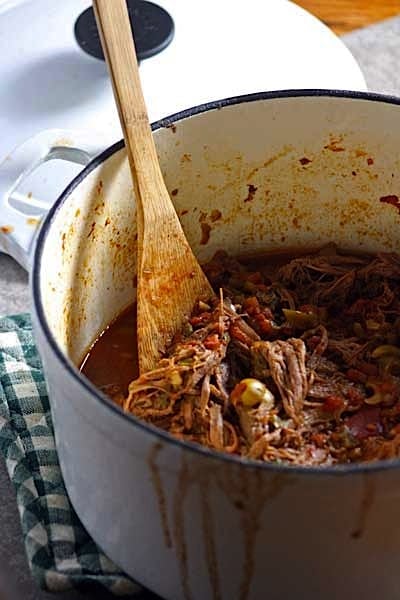
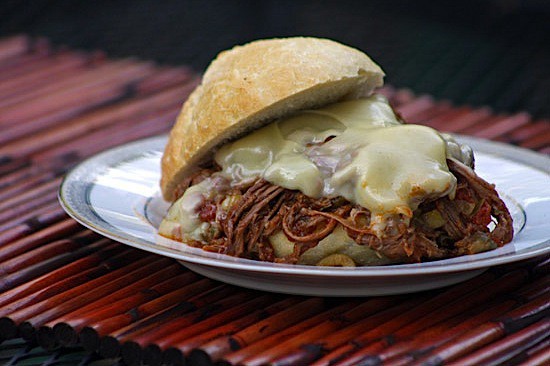
Tortellini with Walnut Pesto
This Monday, October 25, is World Pasta Day, a day devoted to one of the world’s most loved carbohydrate. I’ve decided to join in the celebration by sharing a recipe from the new book, The Geometry of Pasta. After all, what better time is there to share a review of a book dedicated entirely to pasta? Especially when the book contains fun recipes, like this one for Tortelloni Di Ricotta Al Pesto Di Noci Tostate (the fancy-pants Italian way of saying, “tortellini with burnt walnut pesto”)?
This fun little book isn’t your standard cookbook at all, which is pretty evident before you even open it. The book is small but thick — like a long novel — and the striking graphic cover is as close to an illustration as you’ll get. But while this book lacks glossy photos (which we all know I love), there’s definitely no shortage of unique recipes. The Geometry of Pasta contains over 100 recipes, each featuring simple ingredients and designed to pair the perfect shape of pasta with the perfect sauce. While that may seem like overkill, there really is an art to figuring out whether a new sauce will pair better with a hearty, ridged pasta or with a smooth angel hair. This book takes the guesswork out of it — and introduces you to pasta shapes you’ve probably never heard of!
Some of the recipes are a little strange (I think I’ll pass on the alphabet pasta with ketchup, though I’m sure a little kid would find it to be a great alternative to spaghetti-o’s) and some of the pasta shapes may be hard to find but with so many recipes, this book has something for everyone. I was a huge fan of this tortellini recipe; cooking it was fun and eating it was even better. The combination of sauce and shape really was ideal — the chunky pesto settled perfectly into the curves of the tortellini, ensuring no sauce was left behind in the bottom of the bowl.
I also loved how the recipes in this book were written. They’re slightly vague, which might be frustrating to those less comfortable in the kitchen, but they remind me of something that might have been passed down by a grandparent — very, very authentic. The dual indexes — one in Italian and one in English – were also a nice touch that I appreciated a lot. While this is definitely more of a specialty cookbook than something you would use every day, it’s a great addition to your collection if you’re a fan of pasta or Italian cuisine.
Click to get the recipe for Tortelloni Di Ricotta Al Pesto Di Noci Tostate From The Geometry of Pasta –>
Cassoulet with White Beans, Sausage & Turkey
I don’t know how I managed to make it through 20-some years of life without trying cassoulet, but I have a feeling I’ll eat enough this fall and winter to make up for it. I made the one pictured here about two weeks ago, and I’ve been dying to have it again ever since. I actually have another one in the oven as I write this post.
Don’t let the fancy French name scare you off. When it comes down to it, cassoulet is nothing more than a white bean and tomato stew. A fragrant sauce flavored with fresh herbs cooks quickly on the stove before being mixed with the rest of the ingredients and baking in the oven. It’s pure stick-to-your-ribs comfort food full of rich and delicious flavors typical of the French countryside.
This dish takes a little longer to make than most of my recipes, requiring about 20 minutes of active time and an hour or so in the oven, but with a little planning it can definitely be made on a weeknight. Go ahead and make a big batch — it tastes even better the next day.
Traditional cassoulet uses duck or goose confit, but since that can be difficult to find (not to mention expensive!) I’ve taken the liberty of using turkey instead. I like the flavor that using some poultry gives the cassoulet, but you can leave it out and use only sausage just as easily.
Click to continue reading Cassoulet with White Beans, Sausage & Turkey –>


